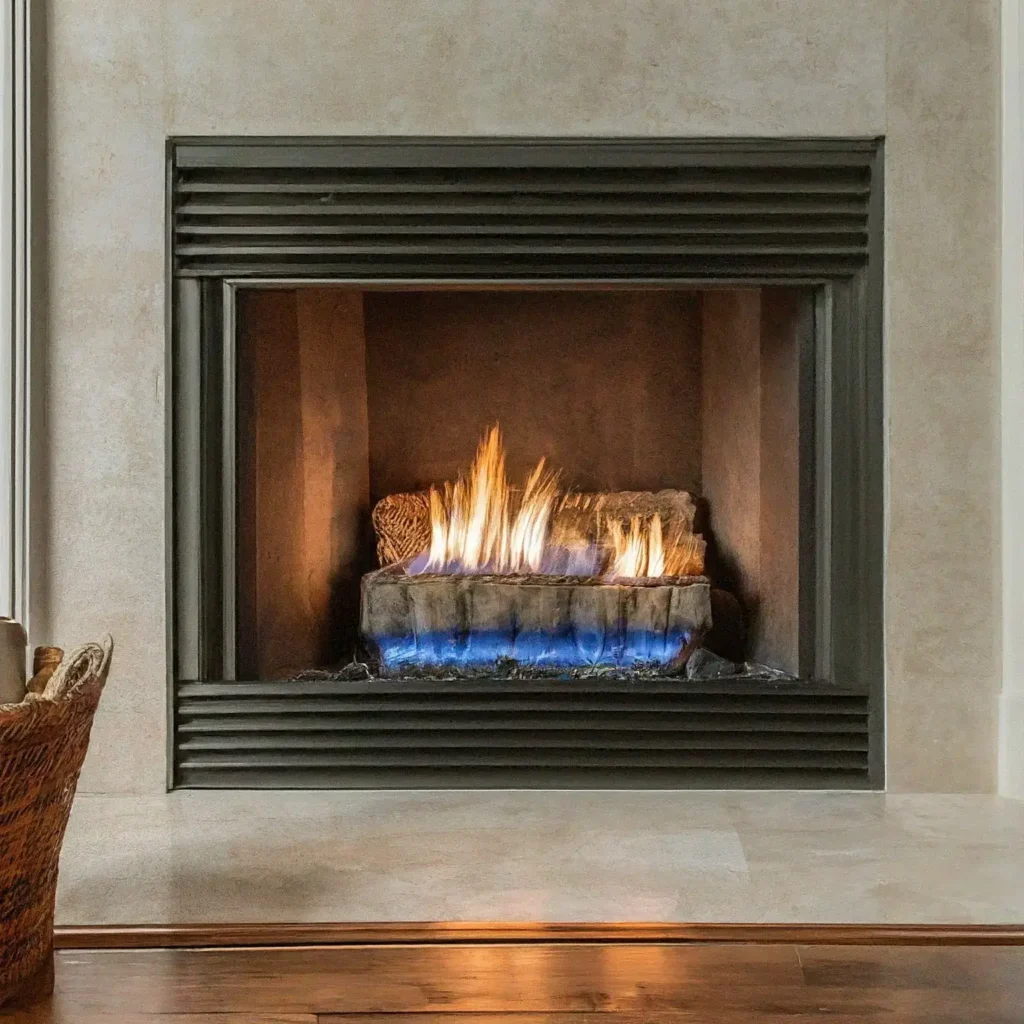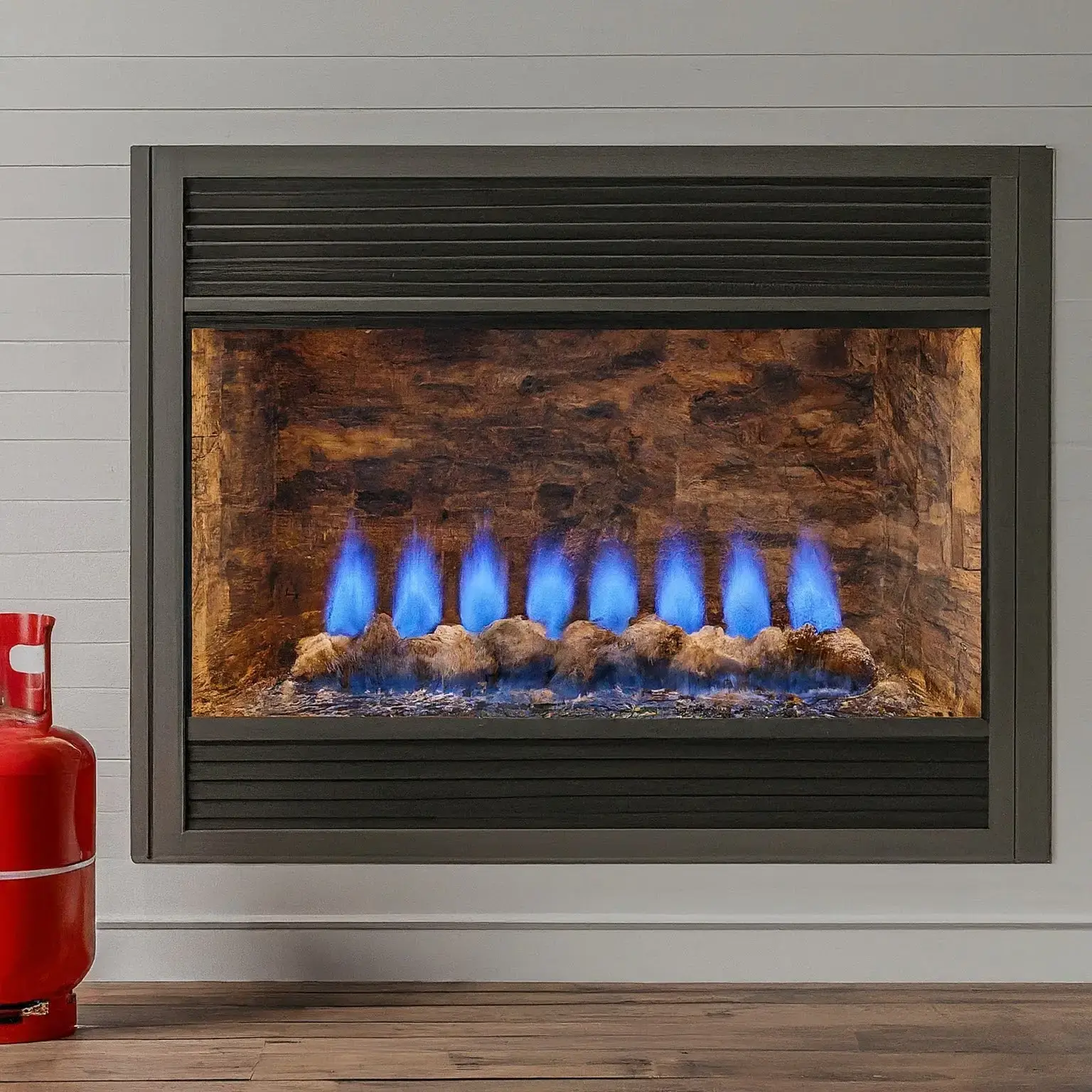Gas fireplaces have gained immense popularity, offering two fuel options: natural gas and propane. But can a gas fireplace use propane?
Gas fireplaces are designed to operate on either liquid propane or natural gas. Due to differences in their combustion properties and burner systems, using propane in a natural gas fireplace or vice versa is not possible.
Gas fireplaces are specifically engineered for either natural gas or liquid propane, not both. While they share similarities, they come with distinct usage patterns and costs.
Can a Gas Fireplace Use Propane?
A gas fireplace is engineered to operate on either liquid propane or natural gas. A fireplace designed for liquid propane cannot function on natural gas, and vice versa. This is due to the differences in combustion behavior and burner requirements.
There are currently two types of gas fireplaces: those designed for natural gas and those designed for propane. A propane-specific fireplace is compatible with propane, while a natural gas fireplace cannot utilize propane.
This distinction arises from the differing states of these gases (gas vs. liquid) and their distinct combustion characteristics.
Natural gas is gaseous, while propane is in liquid form. Moreover, propane fireplaces have specific safety regulations, including the necessity for a manual valve to shut off the propane supply.
Given these safety regulations and the distinct burner requirements, a natural gas fireplace cannot use propane. Conversely, if your gas fireplace is designed for propane, it will function perfectly with propane.
Are Gas and Propane Fireplaces Identical?
Gas and propane fireplaces differ due to their specific burner systems. Although both utilize gas, they operate on different fuel types, resulting in key distinctions. Each type requires its unique burner.
Propane fireplaces necessitate additional safety measures due to the heavier nature of liquid propane compared to gas. This means that propane fireplaces need a manual valve to control the propane supply,
minimizing the risk of any spillage and potential fire hazards. Additionally, propane fireplaces require the installation of a propane tank nearby, whereas natural gas fireplaces can be connected directly to the home’s gas lines.
While the need for a propane tank may limit the placement of a propane fireplace, this typically isn’t a significant issue on the ground floor.
How Much Propane Does a Fireplace Use?
A propane fireplace consumes approximately one gallon per 91,500 BTUs. The exact usage depends on the fireplace’s BTU output, but on average, it consumes about half to a full gallon of propane per hour.
The amount of propane your fireplace consumes is influenced by several factors:
BTU output of the fireplace Is the fireplace the primary heating source for your home? What settings is the fireplace operating on?
Gas fireplaces come in various sizes and outputs, which directly impact propane consumption. Some fireplaces generate 50,000 BTUs, using about half a gallon per hour. Others with an output of 100,000 BTUs will use a little over a gallon per hour.
If the fireplace serves as the primary heating source and the weather is colder, it will require more propane. Additionally, adjusting the flame size will affect propane usage.
How Much Propane Does a Pilot Light Use?
On average, a pilot light consumes around 800 BTUs per hour. This amounts to 19,200 BTUs per day, equivalent to roughly 1/5 of a gallon of propane.
The exact consumption depends on the specific model and whether it has a standing pilot light (continuously burning) or an electronically ignitable one.
Standing pilot lights are consistently on, resulting in higher gas/propane usage. They are widely popular for their reliability and ease of use.
Electronically ignited pilot lights only activate when the fireplace is in use. This significantly reduces gas/propane consumption compared to standing pilot lights.
The electronic ignition system was developed to reduce the waste associated with continuously burning standing pilot lights.
In practical terms, a standing pilot light consumes about 1/5 of a gallon of propane per 24 hours, roughly 0.008 gallons per hour.
With an electronic ignition system, running the fireplace for 4 hours would utilize about 0.03 gallons of propane, compared to the 0.2 gallons consumed by a standing pilot light.
How Much Does It Cost to Run a Propane Gas Fireplace?
Running a propane fireplace costs approximately $60 per month on average. Propane is priced at around $2 per gallon. A typical propane fireplace consumes about 1 gallon every 2 hours, operating for an average of 60 hours per month.
The cost of running a propane fireplace is closely tied to its propane consumption. Using average figures, every hour of operation will cost around $1. Assuming a homeowner runs the fireplace for 2 hours daily, this amounts to about $2 per day or roughly $60 per month.

Considerations for pilot light usage were discussed earlier, with standing pilot lights incurring an additional cost of about $0.40 per day and electronically ignited ones costing only about $0.034 per day when the fireplace is used for an average of 2 hours.
Does Propane Burn Hotter Than Natural Gas?
Both propane and natural gas burn at 3560 degrees Fahrenheit. However, propane produces approximately 2520 BTUs per cubic foot, while natural gas generates about 1012 BTUs. This means that propane is significantly more effective at generating heat compared to natural gas.
Propane and natural gas both burn at the same high temperature, but propane releases substantially more heat. Measured in BTUs, propane produces over twice as much heat per cubic foot (2520) compared to natural gas (1012). This makes propane far more efficient at providing warmth.
In practical terms, this means a propane fireplace is much more effective at heating a home compared to a natural gas fireplace. Additionally, propane is lauded for its environmentally friendly profile with zero harmful carbon emissions.
What’s Cheaper; Natural Gas Or Propane?
Natural gas fireplaces are more cost-effective than propane fireplaces. The price per gallon of natural gas is approximately $1.50, while propane is priced at $2 per gallon. However, propane generates twice the amount of heat compared to natural gas.
Natural gas fireplaces are generally more budget-friendly than their propane counterparts. The cost per gallon of natural gas is roughly 25% lower than that of propane. Historically, natural gas has consistently been cheaper than propane.
However, the crucial distinction lies in the heat output:
Propane produces twice as much heat.
Despite being cheaper per gallon, natural gas is about 50% less efficient in generating heat compared to propane. In terms of value for money, if you were to spend $10 on both natural gas and propane, you’d find that propane offers more heat and is ultimately the more cost-effective option.


